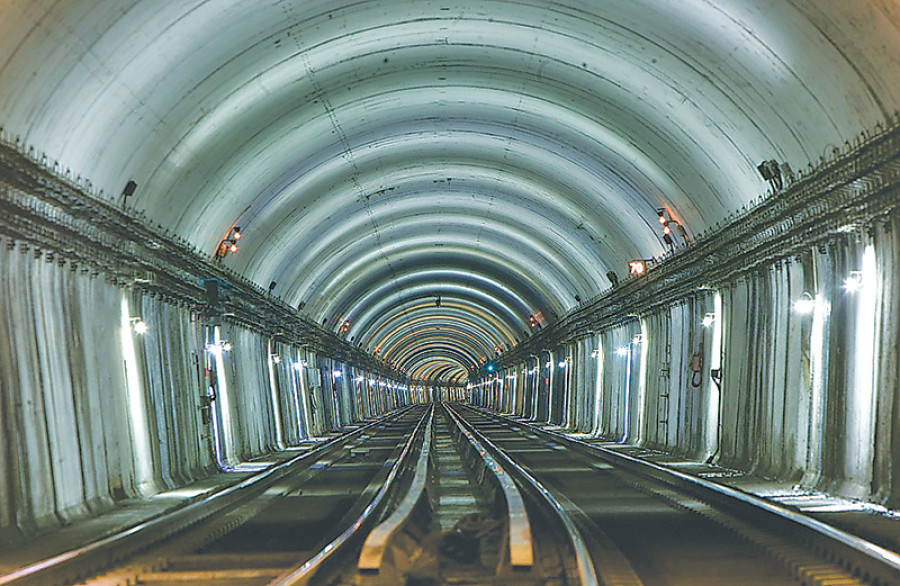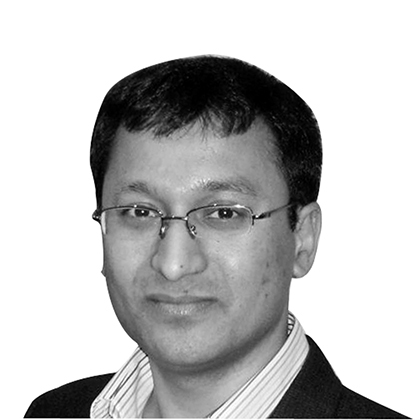Opinion
Metro Kathmandu
Only an underground metro system can alleviate transport issues without displacing natives or damaging heritage sites
Binod L Amatya
Kathmandu is a historic city with heritage areas everywhere. Modern Kathmandu has however evolved haphazardly without adequate urban infrastructure and planning. As a result public spaces are limited and narrow roads are barely coping with the demands of traffic. As a result, the city is facing transport chaos and environmental disorder, especially air pollution.
The city needs 21st century rail infrastructure to resolve these problems. A new mode of transport, the underground metro railway system, is necessary to maintain Kathmandu’s historic value at the same time offering an efficient transport system in the densely populated area without displacing the native settlements. This would provide a mass transit capability in the city, which could bring economic prosperity, improved quality of life and sustainable development in the region.
The valley was a lake thousands of years ago but the plate tectonics activity of the Himalayan region caused the lake water to drain out gradually so that the place became habitable. Studies show that, in general, the northern area of the Valley is sand-dominated while the southern area is clay-dominated. The bedrock in the central area is anticipated to be very deep. In general, the top ten to fifteen metres of the subsurface of the central area is a complex sequence of mostly loose sand and soft clay, exhibiting weak strata. Such strata overlays a black, silty clay deposit.
Options for development
Considering the city’s urban density, limited public urban space and historical significance, the development of a network of bored railway tunnels is necessary in the core urban area and this is also technically feasible. About thirty percent of the surface area of the valley is judged to be highly susceptible to liquefaction during an earthquake. In these circumstances, underground structures such as tunnels would be inherently robust and economical in the long run compared to an over-ground, elevated sky-train system.
Considering ground conditions and advancements in tunnel boring machine (TBM) technology, twin bore tunnels of 6.0m external diameter at a depth of around 25m below ground level would be appropriate in Kathmandu. A single tunnel carrying twin tracks would require an 8m external diameter at 45m. Such diameters and depths would cause negligible damage to the properties on the surface that are located along the tunnel alignment.
The black clay, which dominates the Valley’s subsurface, is of firm to stiff consistency and is an ideal medium for tunnelling. With the availability of various kinds of TBM on the market, the construction of tunnels is not such a complicated and difficult job as it used to be. Tunnels and underground structures are more robust than over-ground structures for a seismically active region like Kathmandu.
A larger tunnel is envisaged for local underground stations. In this case, the same running tunnel can be enlarged to a relatively larger internal diameter such as 6.5m to 7.0m for about 75m length to accommodate a rail platform.
What needs to be done immediately is to delineate the route in the city and prevent the further evolution of high-rise buildings in the tunnel influence zone. Further delay in the process may require future tunnels to be much deeper than prescribed above.
Nine major underground stations (mega stations) are proposed within and around the area of the Ring Road such as Bhrikuti Mandap, Tankeshwor, New Bus Park, Bansbari, Bouddha, Koteshwor, Satdobato, Balkhu and Kalanki. These stations should be relatively large, multi-storeyed underground structures that serve as transit points for the Metro. Based on local need, smaller stations can be built at a distance of about 0.5 km to 1.5 km at various locations.
Challenges ahead
Construction of the multi-storey underground railway stations will be a challenging job. There is very limited understanding of the ground condition and engineering behaviour of Kathmandu soil and geology. Limited understanding of the ground condition is a huge risk for construction of any type of underground structure. Ground improvement technology appropriate for the local context should be devised and implemented for the construction of underground stations. Research on soil in Kathmandu is seriously lacking. Thus, urgent studies on the behaviour of the soil in the Valley is necessary for the success of the underground Kathmandu Metro rail. Also, an initiative is required to create a ‘Global Ground Investigation Data Based System’ of Kathmandu by compiling all the available data from the geo-consultants of Nepal. This will be a very good source of reference for any major project at the early stage.
Kathmandu lies in the Himalayan active seismic zone, so any underground and over-ground structures to be built in the region have to be seismic-resistant. Development of the design code of practice for the underground structures for the region is a timely need. Lessons can be learnt from Metro developments in seismically active regions and areas with soft ground conditions such as Mexico City, Los Angeles, Tokyo and Bangkok.
An effort is underway for a joint research collaboration between Warwick University, United Kingdom and the Institute of Engineering (IOE), Tribhuvan University, Nepal with support from local industrial partners to investigate the construction of underground metro structures in Kathmandu. It is anticipated that this research will produce many useful findings appropriate for the construction of tunnels and underground stations in the local context.
The underground metro rail network is the only sustainable solution for keeping Kathmandu moving, for the present and the future. Such development is a timely response to regenerate the historic capital city. This ensures economic prosperity of the region, delivering real changes without displacing the natives and damaging precious heritages.
Amatya is a chartered civil engineer and principal ground engineering consultant currently practicing in the UK




 6.84°C Kathmandu
6.84°C Kathmandu












